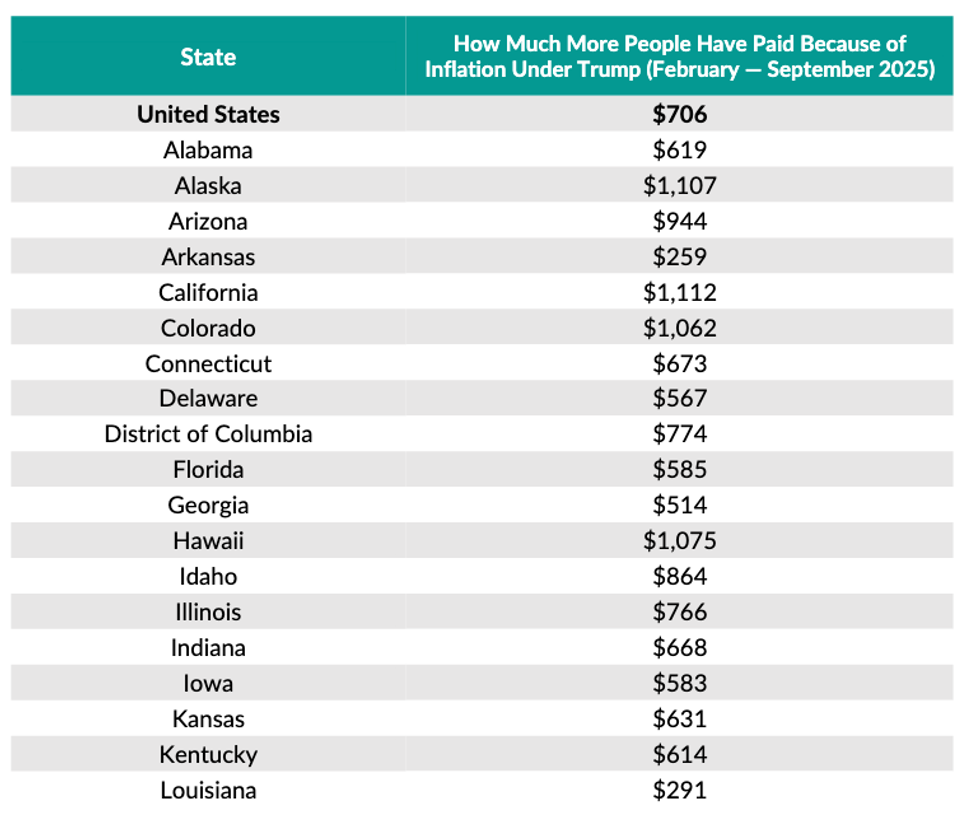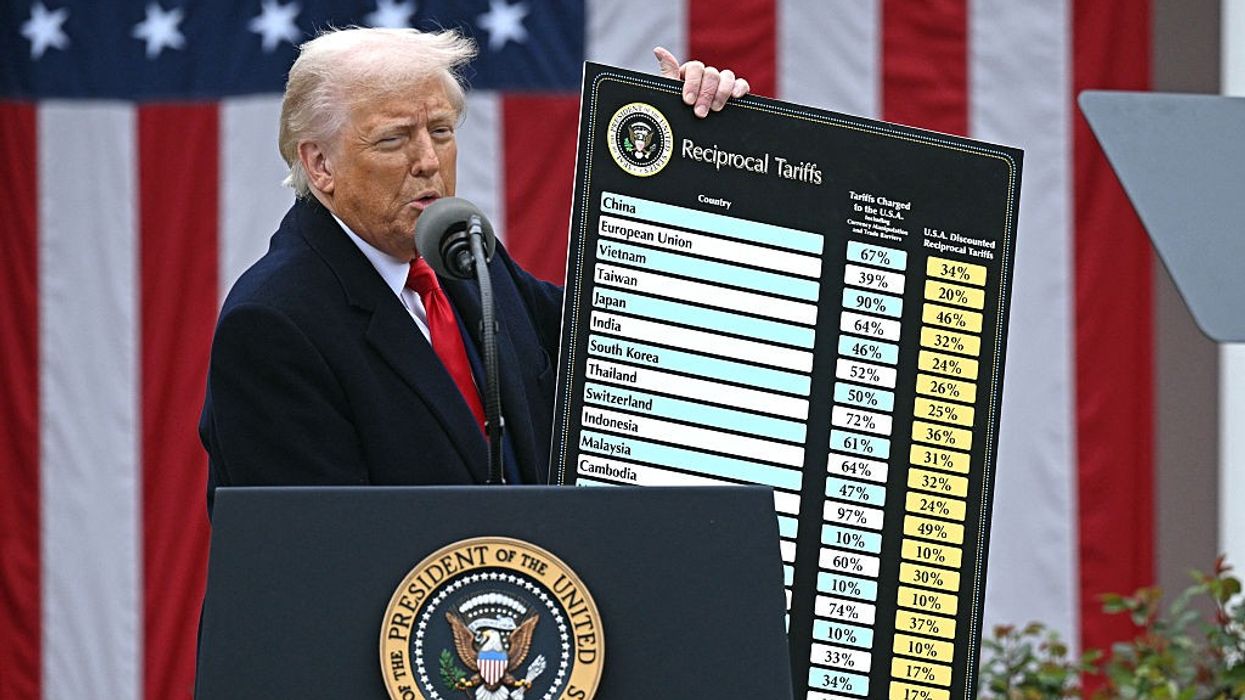Under Trump, Inflation Is Costing Average US Family $700 More Per Month
"While President Trump claimed that he would bring down prices, the reality is that Americans have seen their costs soar even higher since he took office."
Democrats on the congressional Joint Economic Committee released a report Thursday detailing how much more the average American family in every US state is having to spend monthly to cover the rising costs of food, shelter, energy, and other necessities under the leadership of President Donald Trump.
The panel released its report on the same day the Trump administration was supposed to publish the October Consumer Price Index (CPI) data. The closely watched CPI report was delayed by the shutdown, and the Trump White House said Wednesday that it's likely the figures will never be released.
Deploying the same methodology that Republicans used to track cost increases under former President Joe Biden, JEC Democrats found that the average US family is spending roughly $700 more per month on basic items since Trump took office in January, pledging to bring prices "way down."
"While President Trump claimed that he would bring down prices, the reality is that Americans have seen their costs soar even higher since he took office," said Sen. Maggie Hassan (D-NH), the JEC's ranking member. "As families across the country spend more to pay their bills and put food on the table, Democrats and Republicans should be working together to lower costs. Instead, President Trump is pushing ahead with reckless tariffs that continue to fuel inflation and drive prices up even higher."
In some states—including Alaska, California, and Colorado—average families are spending over $1,000 more per month to maintain their living standards as costs continue to rise, in part due to Trump's erratic tariff regime.
The report's findings run directly counter to Trump's triumphant rhetoric on inflation and the US economy more broadly.
CNN's Daniel Dale noted earlier this week that Trump has been on a "lying spree about inflation," falsely claiming that "every price is down" and that "everybody knows that it's far less expensive under Trump than it was under Sleepy Joe Biden."
"None of that is true," Dale wrote. "Prices are up during this administration. Average prices were 1.7% higher in September than they were in January, according to the most recent figures from the federal Consumer Price Index, and 3% higher than they were in September 2024. There has been inflation every month of the term, and far more products have gotten costlier than cheaper."
"Inflation not only very much continues to exist but has been accelerating since the spring," Dale added. "As of September, the year-over-year inflation rate had increased for five consecutive months."




